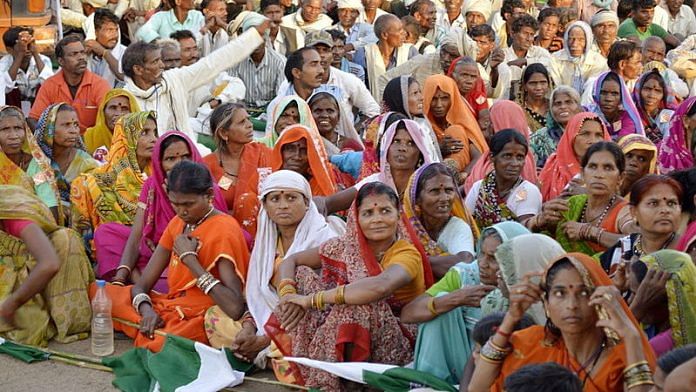New Delhi: The Narendra Modi government is all set to start a Socio-Economic Caste Census (SECC) pilot this year, looking to update the 2011 findings and in an indication that this is likely to be a regular exercise like the decennial Census.
The pilot, scheduled to begin 2 October, will merely be a socio-economic census, leaving out the controversial caste aspect, ThePrint has learnt.
According to highly placed sources in the rural development ministry, which conducted the census in rural areas, the idea is to carry out the full exercise next year, with the October exercise just a limited pilot.
“We will update the SECC findings. The pilot on a limited scale will begin on 2 October,” said a senior ministry official. “It will only measure socio-economic parameters and not caste. Thereafter, we hope to conduct the full exercise by 2020.”
The exercise
The SECC 2011 was a first-of-its-kind exercise, looking to identify poverty through a multi-dimensional lens by using a range of parameters at the household-level, like occupation, education, disability, possession of assets, the type of house owned, SC/ST status and employment.
It covered 24.49 crore households across income lines, and was conducted through a door-to-door exercise.
While the rural development ministry conducted the census in rural areas, the Ministry of Housing and Urban Poverty Alleviation (since renamed Ministry of Housing and Urban Affairs) was responsible for it in urban India.
The caste census was conducted for the first time since 1931. It was carried out under the jurisdiction of the Ministry of Home Affairs, Registrar General of India (RGI), and the Census Commissioner of India, but its findings were never revealed.
Also read: Narendra Modi govt to conduct caste-wise census in 2021: Sushil Kumar Modi
The findings of the SECC in rural areas turned out to be most crucial, forming the basis of identifying beneficiaries of key government schemes, including PM Modi’s pet rural housing project.
The multi-dimensional and exhaustive SECC data — moving away from the traditional Below-Poverty-Line measure — became the bedrock of government welfare programmes in rural India.
Of the 24.49 crore households covered under the SECC, 17.97 crore were in rural areas.
The rural development ministry now wants to align the process with the overall Census to ensure parity in the listing of households.
“We want to align the process with the Census, to the extent that once the listing of households for the latter is done, we use the same data, so we don’t miss out anybody,” said the ministry official.
While the Census is due in 2021, the ministry hopes to be able to finish the SECC next year itself, once the listing of households is complete.
The controversial caste aspect
The most jarring part of the 2011 SECC was that while the rural and urban socio-economic data was released in mid-2015 — made public to the minutest of details — the caste part was never brought out.
The caste findings have been kept under wraps by both the Congress-led UPA government, which conducted the exercise, as well as the Bharatiya Janata Party (BJP)-led National Democratic Alliance (NDA), which released the data and has used it extensively since.
The political implications as well as the sensitivity of the issue are believed to be the factors that have prevented the government from processing the data fully. Sources in the government also say the RGI was “not entirely satisfied with the data collection — in terms of both the method and findings”.
Also read: Indian elites holding back wealth tied in slums. And here’s what Modi govt can do







I am sure valmikis and shuklas will exchange marriage proposal under Modi Rule
Good. Intercaste marriages will make caste irrelevant by 2030 anyway.